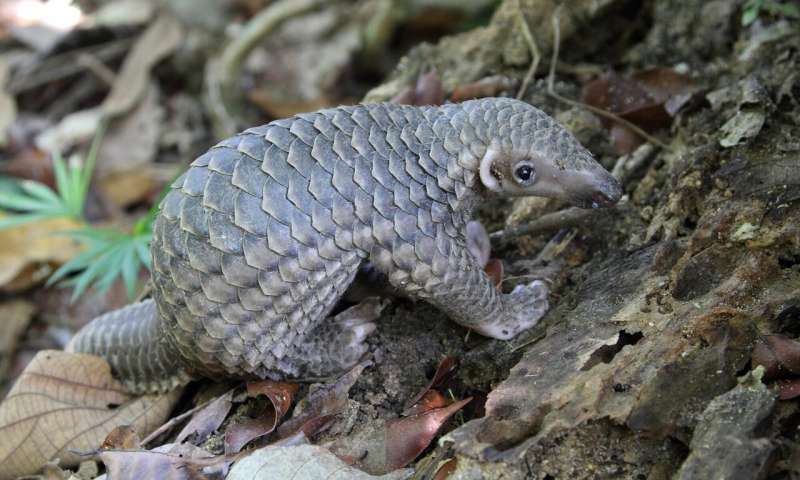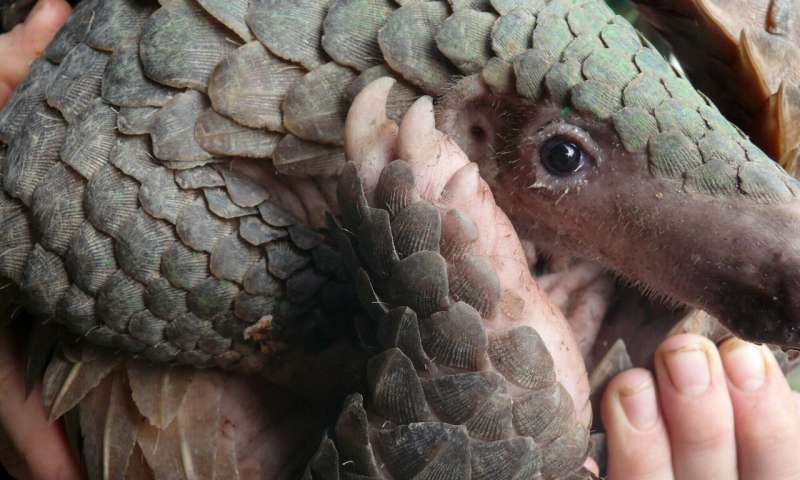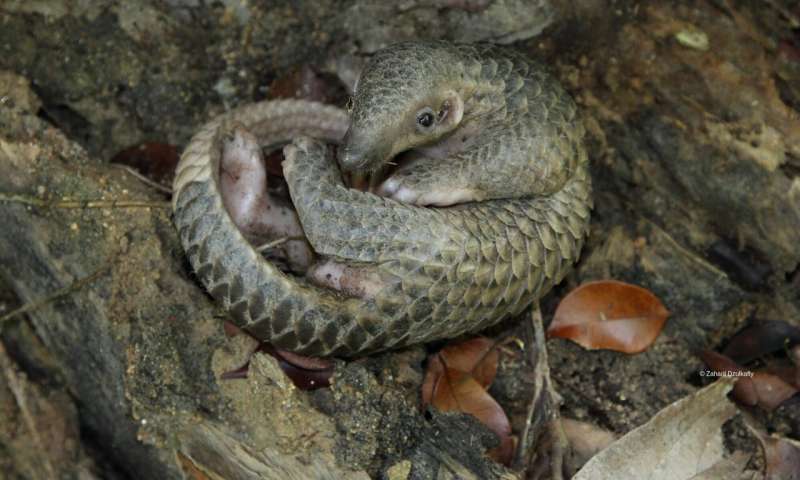Pangolins set new world record… but no one is celebrating

What is the fastest thing on four legs? Which is the world's smallest mammal? How much did an elephant bird's egg weigh? When I was a child, I was fascinated by this kind of animal fact. And still am, if I'm honest. Inevitably, there was a mild obsession with record-breakers. Who doesn't love a bat the size of a bumblebee? Or a whale with a tongue the size of a small car? Or a falcon that can plummet at over 200 miles per hour during a high-speed dive?
I was prone to collecting and sharing these nuggets of information about wildlife from an early age, but if I'm honest I don't recall learning much about scaly anteaters beyond the fact that they are scaly and that – shock horror – they eat ants. Nor do I remember seeing them referred to as pangolins, and I certainly didn't know that there were eight species worldwide. I'm sure I wasn't alone in my ignorance. And I'm equally convinced that I'm not the only one who – having belatedly 'discovered' them – is hungry for more information.
Pangolins are extraordinary creatures. Toothless wonders sporting a protective cloak of razor-sharp scales, they are perfectly adapted to a life that revolves around eating vast quantities of ants and termites while avoiding being eaten themselves. Strong claws to dig out their prey from sturdy, sometimes concrete-hard, nests. A sticky tongue to reach deep into crevices and mop up insects like a strip of animated flypaper. A prehensile tail that helps them to climb trees but also comes in handy during motherhood when the scaly infants hitch a ride. And, crucially, the remarkable ability to roll up into an armoured, predator-proof ball.

Close up, they are even more remarkable. The first live pangolin I ever encountered was at a wildlife rescue centre where I was working in Vietnam. I discovered at first hand just how well-armoured they are when I rashly ran my fingertip along the edge of one of those scales. That was an experiment I won't repeat.
It was during my time in Vietnam that I first began to appreciate the extent to which the wild pangolin population was being plundered to satisfy the demand for its meat and scales. The few pangolins that we managed to rescue and release back into the wild were just the tip of a very large termite mound.
A starring role in Guinness World Records alongside the likes of the reticulated python, Argentinosaurus and Usain Bolt should be the ultimate accolade, but the pangolin has an unenviable claim to fame. Currently listed as the world's most trafficked wild mammal, it is an animal in freefall.

An eye-watering number of pangolins – estimated at more than a million – are believed to have been taken from the wild since 2000. Tellingly, the past decade has witnessed an exponential rise in the volume of African species recorded in the illegal trade, a sure sign that the diminishing availability of Asian pangolins is forcing traffickers to turn their attentions elsewhere.
At Fauna & Flora International (FFI), we are working to protect the remaining pangolin populations – either directly or indirectly – at many of our project sites in Africa and Southeast Asia. Our tiger protection teams in Sumatra's Kerinci Seblat National Park, for example, have enjoyed significant success in this regard, but here and elsewhere we are fighting a rearguard action against an illicit trade that is threatening to hoover up the last remaining pangolins on the planet. It is going to take a massive collective effort on the part of conservationists to safeguard all eight species – two of which are officially critically endangered – and, in particular, to reduce the demand that is driving the slaughter.
Pangolins undoubtedly enjoy a higher profile today than when I was a child. Unfortunately, they are making headlines for all the wrong reasons. The next generation of children should not have to grow up in a world where it feels normal to play a wildlife version of Top Trumps based on which animal is the most frequently traded, or the closest to extinction.
I have a vision that, one day, the pangolin's inclusion in the record books will be based on the cuteness of its young, or the volume of termites consumed in a single sitting, or even the sharpness of its scales. Here's hoping.
Provided by Fauna & Flora International



















